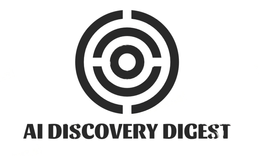Welcome to a world where technology and tradition intersect, giving rise to innovative solutions in cultural and artistic preservation. In this digital age, Artificial Intelligence (AI) is not just a futuristic concept but a powerful tool shaping the way we safeguard our heritage for generations to come. Let’s delve into how AI is revolutionizing the landscape of cultural conservation and artistic expression.
The Importance of Cultural and Artistic Preservation
Cultural and artistic preservation is a vital aspect of our society, ensuring that the rich tapestry of human history is safeguarded for future generations to appreciate and learn from. It serves as a bridge between the past and the present, allowing us to connect with our roots and understand where we come from.
Through preserving cultural heritage, we can maintain traditions, values, and practices that hold significant meaning within various communities worldwide. Artistic preservation allows us to protect valuable works of art that reflect different periods in history or represent unique perspectives on societal issues.
By cherishing our cultural and artistic heritage, we honor the diversity of human expression and celebrate the beauty found in different forms of creativity. These efforts not only preserve tangible artifacts but also safeguard intangible elements such as languages, rituals, music, dance forms – all contributing to the richness of our global heritage.
How AI is Being Used in Preservation Efforts
AI is revolutionizing the way we preserve and protect our cultural heritage and artistic masterpieces. From digitizing ancient manuscripts to restoring deteriorating artworks, AI technologies are playing a crucial role in safeguarding our history for future generations.
One of the key ways AI is being utilized in preservation efforts is through image recognition algorithms that can analyze, categorize, and restore damaged or faded artworks with incredible precision. These algorithms can identify patterns, colors, and structures within images to recreate missing parts or enhance existing ones.
AI-powered language processing tools are enabling researchers to translate and transcribe historical texts quickly and accurately. This breakthrough technology helps unlock ancient knowledge that was previously inaccessible due to language barriers or deterioration.
By harnessing machine learning capabilities, institutions like museums and libraries can now efficiently organize vast collections of artifacts and documents, making them more accessible to scholars and the public alike. The possibilities for using AI in cultural preservation are endless!
Case Studies of Successful AI Preservation Projects
AI has shown its potential in preserving cultural and artistic heritage through various successful projects around the world. One compelling example is the use of AI to restore ancient manuscripts that are deteriorating over time. By utilizing machine learning algorithms, researchers can digitally reconstruct damaged texts, ensuring their preservation for future generations.
Another fascinating case study involves the application of AI in restoring and enhancing old photographs and artworks. Through advanced image recognition technology, AI can identify imperfections and enhance details in historical images, breathing new life into fading masterpieces.
Museums and cultural institutions have adopted AI to analyze vast collections of artifacts and documents efficiently. This not only speeds up cataloging processes but also helps uncover hidden insights about our past.
These innovative applications demonstrate how AI is revolutionizing the field of cultural preservation, safeguarding our rich heritage for posterity.
Potential Challenges and Limitations of Using AI in Preservation
While AI offers great potential in cultural and artistic preservation, there are challenges to consider. One limitation is the lack of emotional understanding that humans possess. AI may struggle to grasp the deeper meanings and emotions conveyed in historical artifacts or artworks. Additionally, there could be issues with bias in the algorithms used for preservation efforts.
Another challenge is the risk of over-reliance on technology. Relying too heavily on AI may lead to neglecting human expertise and intuition crucial for interpreting and preserving cultural heritage accurately. Furthermore, there are concerns about data privacy and security when utilizing sensitive information for preservation purposes.
The cost associated with implementing advanced AI technologies can be a barrier for some organizations or institutions. Maintaining these systems and ensuring their accuracy require significant financial resources. Despite these challenges, finding a balance between leveraging AI capabilities while respecting human insights remains essential in successful preservation endeavors.”
The Role of Humans in Preserving our History with the Help of AI
As we navigate the intricate landscape of cultural and artistic preservation, it is clear that AI plays a pivotal role in safeguarding our heritage for future generations. Its capabilities in analyzing, restoring, and disseminating valuable artifacts and information are truly remarkable.
While AI can significantly enhance preservation efforts, it cannot replace the human touch. The intrinsic value of empathy, creativity, and critical thinking that humans possess is irreplaceable when it comes to understanding the nuances of culture and art.
The collaboration between humans and AI is essential for comprehensive cultural and artistic preservation. By leveraging the strengths of both entities, we can ensure that our rich history continues to be cherished, celebrated, and protected for years to come. Together, we hold the key to unlocking a future where our past thrives in all its glory.


